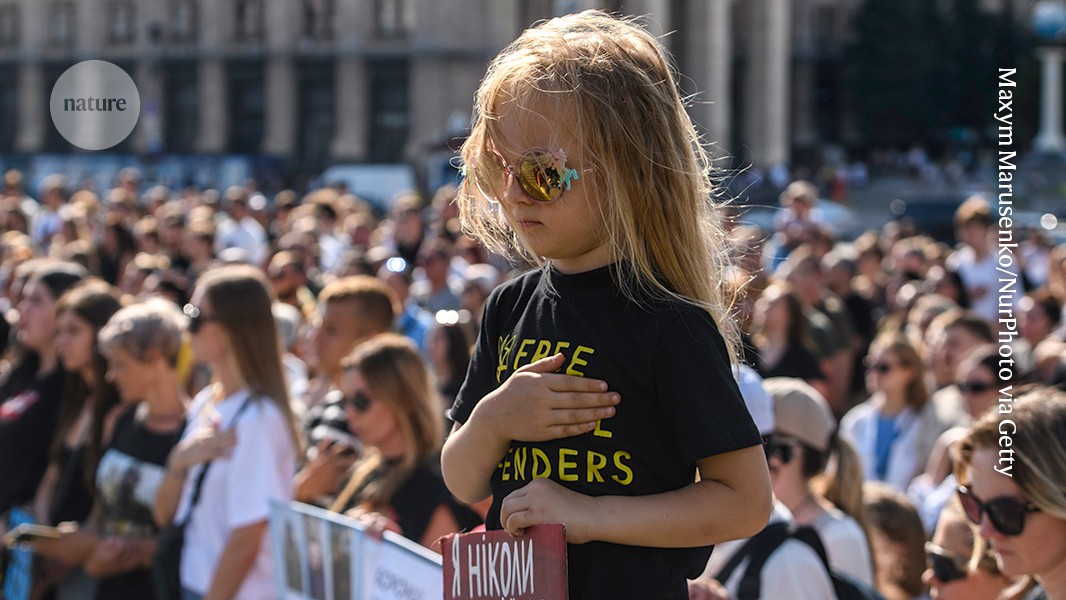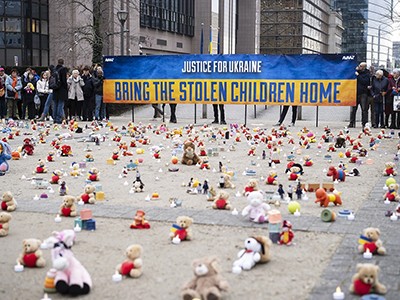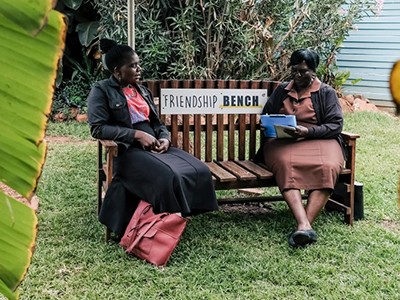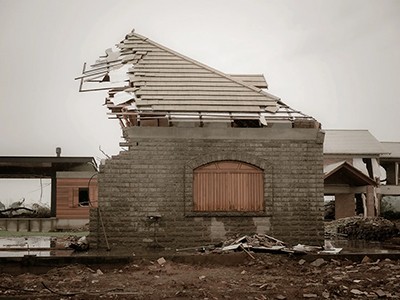In 2024, wars killed hundreds of thousands of people in Ukraine, Gaza, Sudan and beyond1. The United Nations refugee agency, UNHCR, reported that more than 122 million people remained displaced from their homes by violence and conflict in the first six months of last year — 5.3 million more than in the same period in 2023 .
These collective traumas can leave emotional scars that shape the health, relationships and life chances of those who experience them, as well as affecting their children and future generations.
For instance, an analysis2 of pregnant women who were in or near the World Trade Centre in New York City during the 11 September 2001 attacks showed that women who went on to develop post-traumatic stress disorder (PTSD) and their infants had stress-hormone profiles that differed both from those of mothers who did not have PTSD and from those of their babies. Japanese Americans whose parents and grandparents were held in Second World War incarceration camps in the United States have reported feeling that their elders’ experiences have made them less trustful of the US government, because they worry that such internment could happen again3.
Build a DNA database to help identify children stolen in conflict
Understanding these generational effects can help individuals, families and communities to find ways to heal. But trauma studies are plagued by a narrow research focus that is hindering progress.
There can be a lack of diversity in the groups studied. For example, although there have been more than 500 published studies exploring the experiences of the families of Holocaust survivors4, a 2021 review identified just 29 studies examining other cultural perspectives5. The experiences of Holocaust survivors cannot be neatly mapped onto the experiences of those who have experienced other mass traumas, particularly those outside European cultures6.
What’s more, most work has focused on individual experiences, from a clinical point of view — analysing symptoms that are passed down the generations, such as PTSD, parenting styles or biological markers of stress. This approach minimizes the role of culture and sociopolitical contexts in shaping how past traumas are experienced, and their effects on communities today.
Yet it is known that these contexts are important. The Japanese American cohort felt that their community’s historical trauma made them more sensitive to injustices facing other groups, for example3. And Armenians living in Greece and Cyprus report that the collective trauma that their community experienced as the targets of genocide during the First World War has enhanced community bonds among Armenians and strengthened support towards other persecuted people7.
As a researcher of social work and ethnic studies, I aim to understand how trauma influences the mental health of migrant and refugee communities. In my view, three key changes are needed to improve understanding of trauma across generations, and to develop more-effective interventions and policies to prevent mass harms and their negative impacts in the future.
Differentiate meanings of trauma
First, scholars across disciplines need to be clear about how they define trauma and about the contexts in which different terms should be used.
Trauma research spans a broad range of disciplines, from clinical psychology to Indigenous studies, anthropology and more. Related concepts are often used interchangeably, without thought given to their academic origins. This can create conceptual confusion and barriers to developing appropriate interventions. For example, ‘intergenerational trauma’ and ‘historical trauma’ are often conflated.
How students and grandparents could solve the global mental-health crisis
The term intergenerational trauma was born out of studies in the 1960s that explored mostly psychiatric symptoms in children of Holocaust survivors. Intergenerational research is focused on the clinical aspects of trauma in families — mainly the ways in which parents’ psychological responses to trauma affect children’s development and mental health8.
By contrast, historical trauma is a term formally developed by Indigenous social-work scholars in the 1990s. It was originally intended to capture the experiences of Indigenous individuals, families and communities in North America following centuries of colonialism, dispossession of land and systemic violence9. Now applied to other historically marginalized communities — descendants of enslaved Africans and diverse immigrant populations, for instance — historical-trauma studies aim to contextualize and explain how histories of oppression underpin structural drivers of current-day health inequities10.
Clearly, these are different phenomena. And other concepts are intertwined with them. Collective trauma — a term used in social psychology — refers to psychological responses to a catastrophic event11. And cultural trauma, common in the social sciences, examines how events are socially and culturally constructed as traumatic12.
Using these ideas interchangeably can hinder research progress. It can be hard to track developments related to one category of trauma reliably, for example. Consistent use of concepts would ensure that new findings build systematically on previous work, and allow researchers to improve understanding of where their study fits into the larger interdisciplinary constellation of knowledge. It might open up opportunities to connect various strands of research — such as parents’ psychological symptoms and the specific events they endured, or community narratives of ancestral suffering and processes of transmission13 — by making it easier to identify the different strands and analyse how they interact.
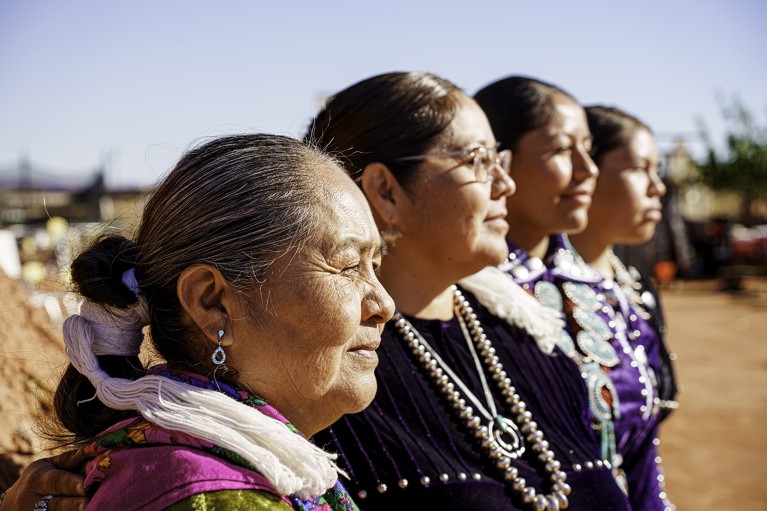
Three generations of Navajo women at Monument Valley on the Utah–Arizona border.Credit: Grand River/Getty
A lack of distinction can make it hard to design effective public-health interventions, too. For example, clinical approaches that are designed for family level-trauma might be used in substance-use interventions for Indigenous North Americans. But these approaches don’t take into account that community healing and structural changes might be needed to overcome these problems, too. Seeing intergenerational traumas as embedded in the context of historical traumas is one way to recognize that they are distinct, yet interconnected14.
Fostering cross-disciplinary dialogue is essential to help future practitioners and researchers recognize the distinct but interconnected impacts of intergenerational and historical trauma. Building shared language and frameworks across fields will strengthen efforts to design interventions that are responsive not only to individual or family needs, but also to broader structural and systemic conditions.
Move beyond individuals
Next, researchers should focus on communities to understand the ramifications of trauma fully and to mitigate its impacts better. So far, most studies on the impact of large-scale past traumas have focused on individual experiences — but this misses crucial context.
Consider Cambodian survivors of the Khmer Rouge genocide in 1975–79. Individual survivors might each have experiences of traumatic events, such as physical violence and starvation, which might have increased their risk of psychological trauma symptoms. But there’s also a broader experience of genocide among survivors — the stories told about the atrocity, the socio-economic ramifications of having been persecuted and more — that is shared in communities and passed on to younger generations15.
Or think of a child who has the devastating experience of losing a parent. Unprocessed grief, fractured family relationships and maladaptive coping can increase the likelihood of traumatic effects for the child. And these will be compounded if the parent was killed as a result of persistent violence in the neighbourhood, or at the hands of state authorities.
How to recover when a climate disaster destroys your city


